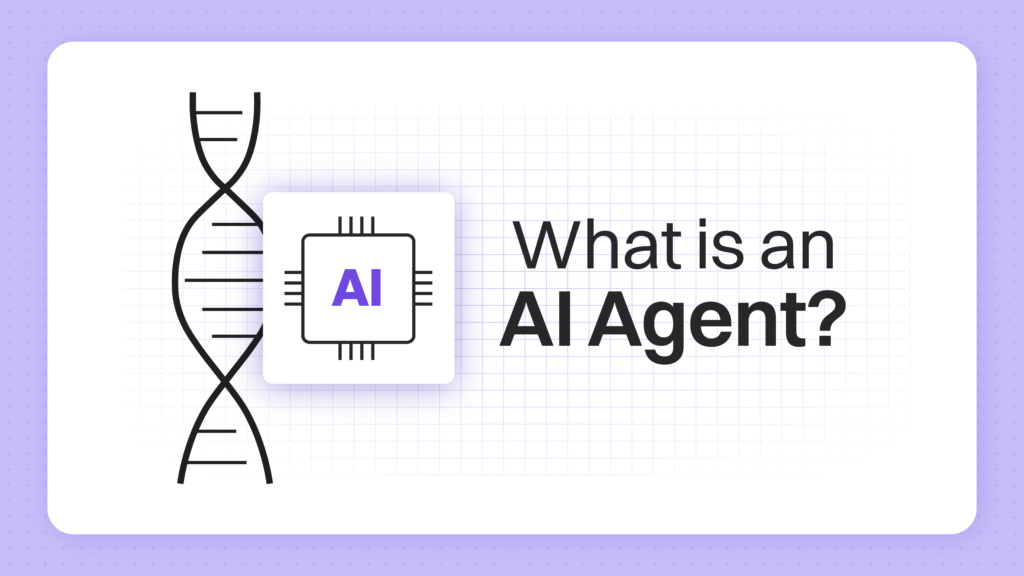Introduction
Artificial Intelligence (AI) Agents are spearheading a transformative revolution, redefining the landscape of automation and user interaction across diverse industries. These intelligent systems are not just tools; they are game-changers capable of making informed decisions, adapting dynamically to their surroundings, and significantly enhancing user experiences. This comprehensive guide equips you with the knowledge and strategies to create your AI-powered agent. Whether your focus is customer service, finance, healthcare, or beyond, this structured roadmap will illuminate the path to innovation and success.
Understanding AI Agent
What is an AI Agent?
An AI Agent is more than an autonomous system—it is a sophisticated entity that perceives its environment, processes vast amounts of information, and takes actionable steps based on its analyses. The capabilities of AI Agents span from simple rule-based bots to advanced systems fueled by deep learning technologies, which continuously learn and evolve. By integrating cutting-edge technologies, these agents emulate human reasoning and decision-making, offering unparalleled solutions to complex challenges.

Types of AI Agent
- Rule-Based Agents: These operate on predefined rules, excelling in straightforward tasks but lacking the ability to learn.
- Machine Learning Agents: These intelligent systems learn from data over time, enhancing their decision-making prowess.
- Deep Learning Agents: Harnessing the power of neural networks, these agents can analyze massive volumes of unstructured data, including images and text.
- Reinforcement Learning Agents: They thrive on interaction, learning from feedback, and optimizing their actions based on rewards, perfect for dynamic environments like trading.
Step 1: Define the Purpose of Your AI Agent
Before diving into the technicalities, it is crucial to pinpoint the purpose of your AI Agent with precision. A well-defined objective will serve as the compass guiding every subsequent decision in your project.
- Chatbots: Perfect for customer support or personal assistants like Siri and Alexa, designed to understand and respond effectively to user inquiries.
- Trading Bots: Focused on analyzing stock market trends and executing trades autonomously, leveraging sophisticated algorithms for optimal outcomes.
- AI Assistants: Essential in healthcare for providing informed recommendations or in finance for fraud detection and analyzing transaction patterns to safeguard interests.
Setting Clear Objectives
Document your goals, whether they are minimizing response time for customer inquiries or improving diagnostic accuracy in healthcare. Establishing measurable outcomes will enable you to evaluate the success of your AI Agent post-deployment.
Step 2: Choose the Right Technology Stack
The technology stack you select is a decisive factor in the efficacy and scalability of your AI Agent.
- Programming Languages: Opt for Python for its rich ecosystem of libraries and frameworks for machine learning and data analysis. JavaScript or Java are excellent choices for web application development.
- Machine Learning Libraries: Leverage powerful libraries like TensorFlow and PyTorch for building robust models, while Scikit-learn offers essential tools for data preprocessing and model evaluation.
- Natural Language Processing (NLP): Consider state-of-the-art solutions like OpenAI’s GPT or Hugging Face’s Transformers for advanced text processing and comprehension. Libraries like spaCy can be valuable for traditional NLP applications.
- Databases: Choose a database solution well-suited to your data structure. Options such as PostgreSQL and MongoDB can efficiently manage structured and unstructured data.
Step 3: Collect and Preprocess Data
High-quality data is the cornerstone of a successful AI Agent. Without it, even the most sophisticated algorithms may falter.
Data Collection
Gather a diverse array of structured and unstructured data relevant to your agent’s intended function. Depending on your chosen application, this may include customer interactions, transaction histories, or medical records.
Preprocessing
- Data Cleaning: Remove irrelevant information, eliminate duplicates, and rectify inaccuracies to ensure a pristine dataset.
- Normalization: Standardize data formats to guarantee consistency in input for your models.
- Feature Engineering: Identify and extract key attributes that will significantly enhance your AI Agent’s performance.
Step 4: Train and Develop the AI Model
The next step is to train the AI model to drive your agent’s functionality.
Learning Approaches
- Supervised Learning: This approach is efficient for chatbots, where the model is trained on labeled datasets that guide it in predicting outcomes based on prior examples.
- Reinforcement Learning: Ideal for complex AI Agents, this method fosters learning through trial and error, optimizing actions based on the rewards they receive—especially effective in fluctuating environments like trading.
- Fine-tuning Pre-trained Models: Leverage existing models like GPT-4, which can drastically accelerate development for tasks requiring advanced NLP capabilities, allowing rapid adaptation to your unique datasets.
Step 5: Build the Architecture of Your AI Agent
Crafting a robust architecture is essential for ensuring seamless interaction and optimal performance.
Key Components
- Input Processing: Develop systems that convert user input (text or voice) into formats comprehensible to your AI model.
- Decision Engine: This segment employs your AI models to analyze input and generate informed predictions or decisions based on user queries.
- Response Generation: Ensure that this module can produce fluent, human-like responses or execute appropriate actions with contextual awareness.
- User Interface: Create intuitive web or mobile interfaces that facilitate engaging interactions and elevate the user experience.
Step 6: Deploy and Optimize Your AI Agent
Deployment represents the crucial transition from development to real-world application.
Deployment Strategies
- Cloud Platforms: Utilize top-tier services such as AWS, Google Cloud, or Azure to host your AI Agent, ensuring scalability and reliability to manage variable loads.
- Performance Monitoring: Implement comprehensive logging and monitoring tools to track your AI Agent’s real-time performance. Solutions like Prometheus or Grafana can visualize key metrics effectively.
Continuous Improvement
Regularly optimize your AI model by analyzing user interactions and integrating new data. This iterative process is vital for maintaining accuracy and relevance in a rapidly changing environment.
Step 7: Ensure Ethical AI Practices
Ethics in AI cannot be overlooked, especially as the technology continues to evolve and influence lives.
Ethical Considerations
- Transparency: Ensure your AI’s decision-making processes are transparent to users, building trust by being open about how data is utilized.
- Data Privacy Regulations: Comply with privacy standards like GDPR and CCPA to uphold individuals’ data rights and foster privacy-conscious development.
- Bias Mitigation: Proactively work to minimize bias in your training datasets. Curate diverse data to promote the development of fair and unbiased AI Agents.
- Security Measures: Implement stringent security protocols to protect your AI Agent from cyber threats, ensuring that user data remains confidential and secure.
Conclusion
Building an AI Agent is undoubtedly challenging, but the potential rewards are extraordinary. By systematically defining the agent’s purpose, selecting the right technologies, and continually optimizing its performance, you can create an intelligent system that revolutionizes automation and decision-making in your industry. As technology advances, the possibilities for AI Agents will only increase, making this an exciting and impactful field to explore. Embrace this opportunity to innovate, and you will contribute to shaping the future of intelligent automation.




